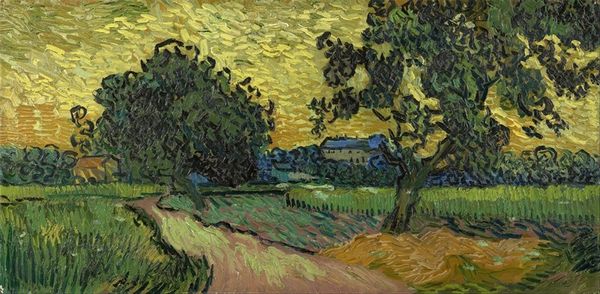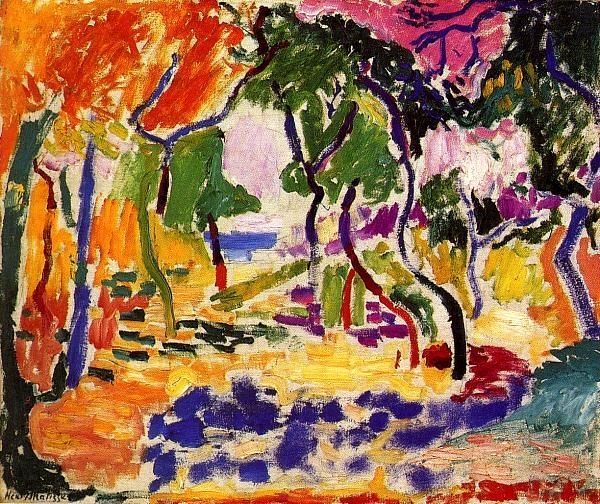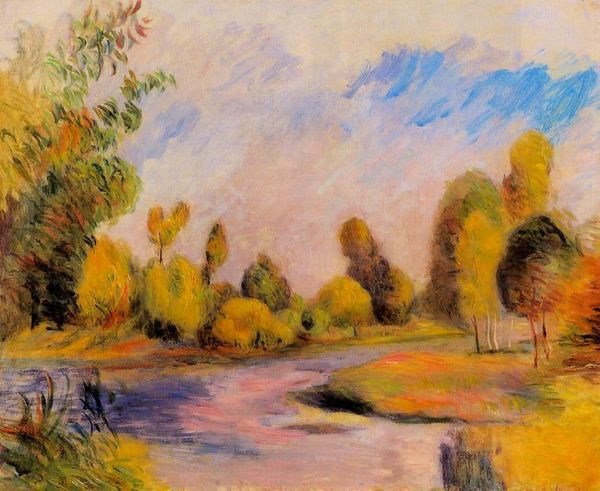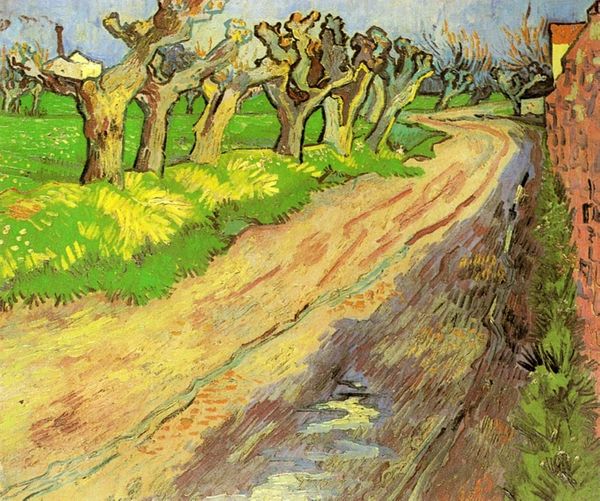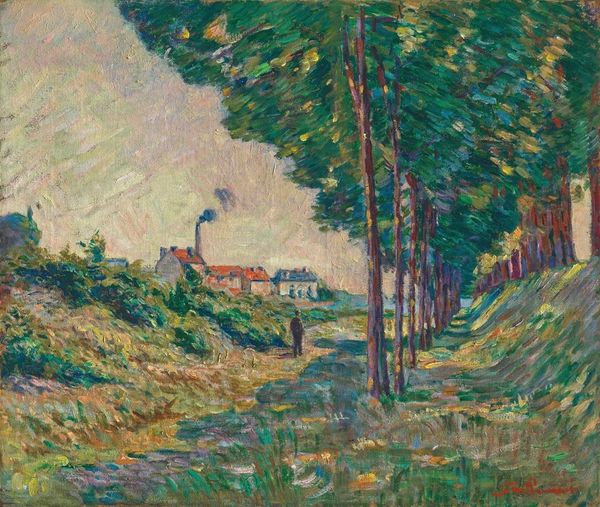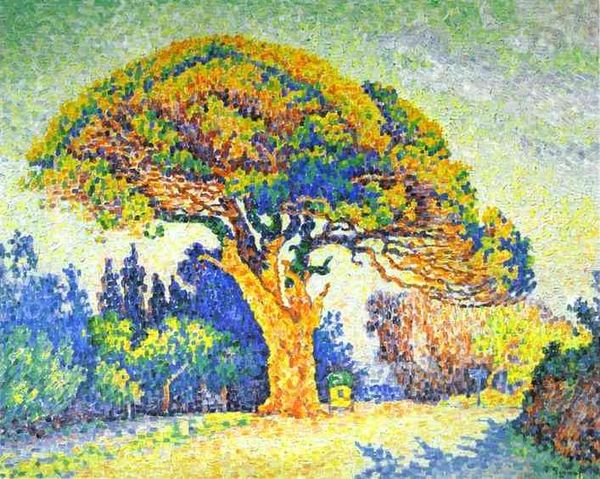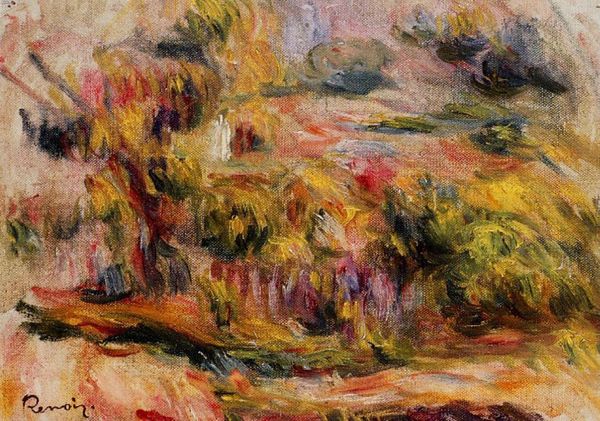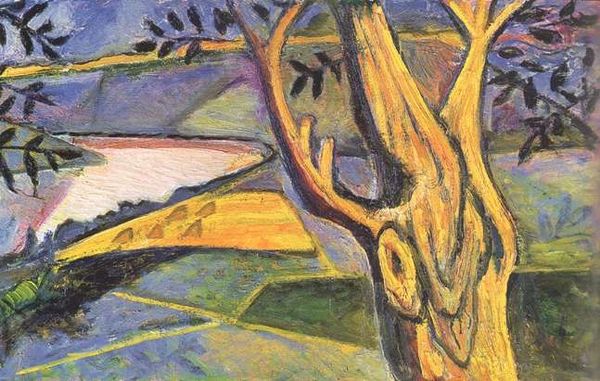
Copyright: Public domain
Curator: Here we have Armand Guillaumin's “À la campagne,” created in 1895. What's your immediate take on it? Editor: Well, the vibrant color palette immediately strikes me. It's quite intense. The application of oil paint creates this sort of dreamy, almost ethereal atmosphere... and quite distinct labor marks of course! Curator: Absolutely, it speaks to his Impressionist roots, and his exploration of light and color. Guillaumin, often overshadowed by his contemporaries, carved his own path with such paintings that were a move toward fauvism, engaging with urbanization as an alienating and exploited reality of modern life, depicting what was extracted. Editor: Yes, and you can see that here in the brushstrokes and impasto technique, I imagine it was done en plein air? There's something raw about the materiality of it all, the thickness of the paint becomes another tactile layer of commentary on a rapidly changing, hyper-productive world. Curator: Exactly! It's also interesting to consider this piece within the context of the Romantic and Naturalist movements as well. The lone figure walking on the path adds to that feeling. Think about gender, labor, and visibility! I’m intrigued by who lives there and where that path leads. Editor: The color also evokes warmth but also an unusual contrast between synthetic material colors and depictions of an earthy path, it also could signify an invitation or directive. Did Guillaumin also critique the elite that bought and consumed such landscape scenes? Curator: That's an interesting way to view it. He exhibited alongside artists involved with those ideas. The composition seems to reflect both the allure and perhaps a subtle critique of rural life amidst the burgeoning industrial landscape. Editor: It's remarkable how Guillaumin layers meaning through material. Makes you think about not just the ‘what’ but the ‘how’ of representation in an industrial era. Curator: Precisely. I see the image as an invitation to think deeply about art’s role in framing the modern landscape and power within. Editor: For me, it’s about questioning the tools, processes and conditions involved in turning nature into consumable spectacle.
Comments
No comments
Be the first to comment and join the conversation on the ultimate creative platform.
